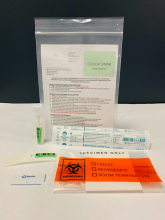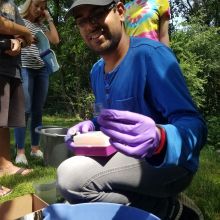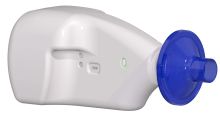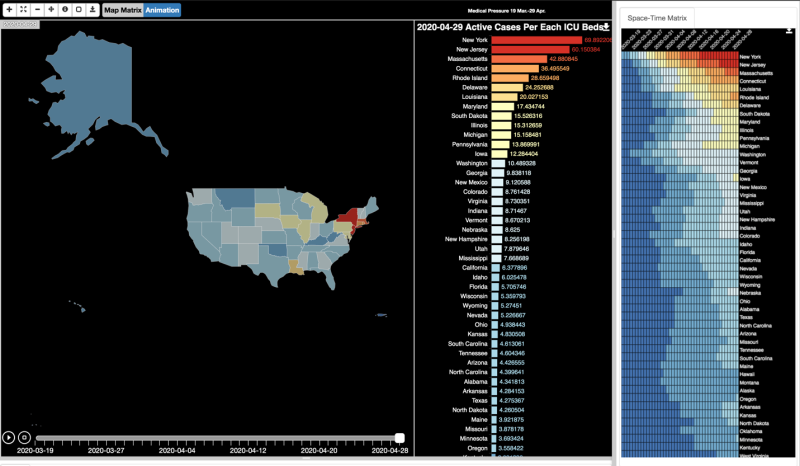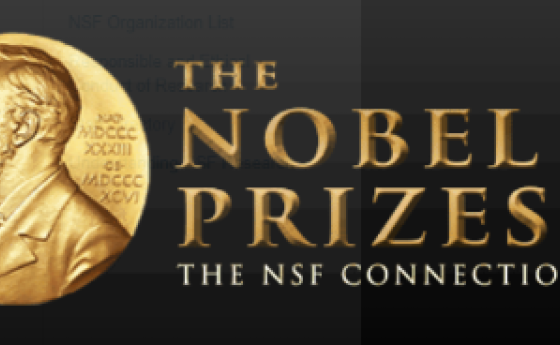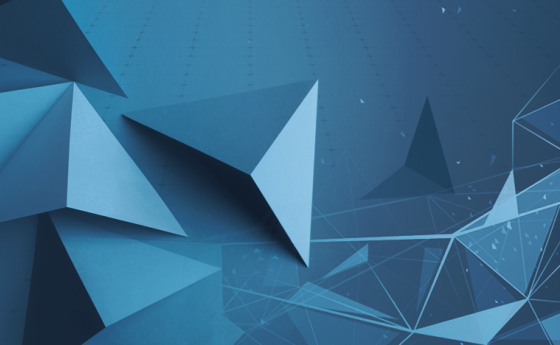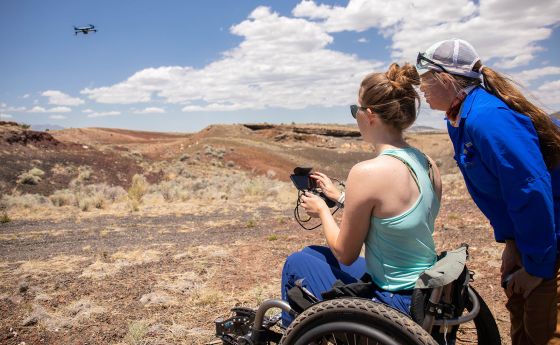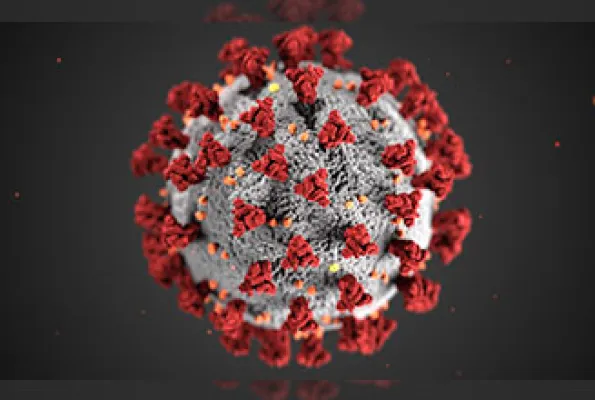
Small business, big impact: How NSF-funded startups are joining the fight against COVID-19
In the fight against COVID-19, the world faces a new and elusive enemy. To confront the challenges posed by the current global pandemic, National Science Foundation-funded small businesses and startups are joining federal and local efforts to develop effective treatments and a potential vaccine. These private-public partnerships foster innovation and economic development, while also ensuring development of safe and effective solutions. Even NSF-funded companies that were not created to specifically respond to COVID-19 are joining the fight. Their efforts demonstrate how early investments in new technologies can create a firm foundation from which researchers can quickly draw to develop new applications that address critical issues, like the pandemic, as they arise.
NSF's Small Business Innovation Research and Small Business Technology Transfer programs, known as America’s Seed Fund, are actively calling for proposals from small businesses and startups working on development and deployment of new technologies, products, processes or services to aid the national and global response to COVID-19. Both programs provide funding to startups launching their technology translation activities, supporting scientific teams committed to launching technology companies for societal and commercial impact. Such support can play an important role in a new company’s growth and success.
For example, Gingko Bioworks is a synthetic biology company whose founders received early SBIR funding in 2009 based on research conducted at an NSF Engineering Research Center. Now valued at around $4 billion, the company is no longer a small business and commits significant resources to aid other researchers in their development of a COVID-19 vaccine, as well as testing and treatments.
Here are some other NSF-funded startup companies that are rallying to respond to the crisis.
Ramping up testing - Aperiomics
In the current pandemic, the most immediate need is to assess the spread of COVID-19 by quickly and widely testing for infection. Aperiomics received SBIR funding in 2017 to develop a test doctors can use to detect every known and sequenced pathogen. In developing this technology, Aperiomics created a database with the genetic information for nearly 40,000 bacteria, viruses, fungi and parasites. This made it possible for Aperiomics to pivot its expertise and equipment toward performing tests that specifically detect the virus that causes COVID-19. The team has been able to establish a testing capacity of 2,500 tests per week. Chief Executive Officer Crystal Icenhour said the NSF funding helped Aperiomics develop the infrastructure, team and expertise that allowed them to make this temporary pivot for targeted detection in order to meet the need for COVID-19 detection. This funding also supported the development of the software and database at the heart of Aperiomics’ core detection technology, which they are refining with recent advancements in machine learning.
Speedy diagnostics at scale - OmniVis
Driven by first-hand experience with public health challenges in different regions of the world, Chief Executive Officer Katherine Clayton co-founded OmniVis, a company that developed app-based technology to detect cholera, a disease that remains fatal in many parts of the world. Funded by NSF, Clayton and her team overcame the technical challenges of miniaturizing a complex laboratory technique into a more intuitive device for non-experts. OmniVis is now adapting its technology to help develop quick and widespread diagnostics for COVID-19.
Omnivis’ technology replicates the genetic material of the bacteria that causes cholera to a point that increases the viscosity of water in a sample. The result: a test can more easily detect even small amounts of cholera bacteria in water. This plug-and-play technology can detect cholera within 30 minutes using a smartphone, even in remote locations far from hospitals or other health care centers. A database of geotagged results helps scientists and public health professionals monitor outbreaks in near-real-time and respond efficiently. OmniVis is now pivoting this technology toward helping with COVID-19 detection. Clayton says NSF’s small business funding mechanism helps turn scientists into entrepreneurs and build collaborative relationships between like-minded innovators.
Smart sample transport - MaxQ
A major challenge facing mass testing of COVID-19 patients is keeping samples viable -- they need to be kept at a specific cold temperature range or they will degrade during transport from test site to lab. MaxQ Research LLC was funded by NSF to develop new, strong thermal insulation materials that can chill and maintain blood, plasma and swab samples within a critical temperature range. These "smart" packages are self-sensing and self-learning, continually monitoring storage temperatures and tracking GPS locations as they travel, and able to warn the courier and lab when a sample inside a package is about to go bad.
For safety reasons, many existing packaging solutions used to transport biohazards are single-use. However, MaxQ has designed its solutions with environmental sustainability in mind. Their specimen boxes can be cleaned, sanitized and reused between 50 and 300 times. The result is fewer wasted samples, less trash, lighter boxes and fewer packages. MaxQ Chief Executive Officer Saravan Kumar says that all of this shrinks the supply chain, keeps costs down, and minimizes impact on the environment. MaxQ is providing their products to hundreds of hospitals, clinics, and testing centers to help with the safe transport of COVID-19 samples.
Expanding the clinical toolbox – Cognita Labs
Spirometry, a standard technique for measuring lung diseases, requires patients to forcefully exhale all the air from their lungs, a painful and technically difficult task. Cognita Labs received NSF funding to improve lung testing and developed PulmoScan, a small, handheld device that determines how narrow and stiff a patient’s airways are through an alternate test called Forced Oscillometry.
PulmoScan is effortless and requires no special training to administer. It uses low-frequency sound waves to calculate resistance and elasticity in airways. Chief Executive Officer and Co-founder Gaurav Patel says that because of the devastation COVID-19 afflicts on the lungs, Cognita Labs is now trying to figure out if PulmoScan can identify which COVID-19 patients are at risk of developing pneumonia and eventually respiratory failure. This could potentially help clinicians prioritize care for high-risk patients.
Tracking the virus with AI - Stabilitas
Stabilitas received NSF funding to create machine learning technology to filter, categorize, geo parse, cluster and summarize massive amounts of critical event information. For example, following an earthquake, thousands of pages of data on the event would have to be manually collated. Stabilitas, however, can gather real-time tabular data from the U.S. Geological Survey, and then correlate that information with news reports, sensor network reports, and social media, and then combine it with historical context to verify what is useful information. Through machine learning, this process is faster, more powerful and delivers actionable information to customers who are directing help and resources.
To aid in the COVID-19 response, Stabilitas’ technology is mining local news reports and other public data to determine critical information, like the early identification of potential pandemic hot spots or an area’s availability of hospital beds. Chief Executive Officer Greg Adams says that NSF funding helped build this technology to quickly get accurate and critical intelligence to the right people, saving time, money and lives.
Redrawing boundaries – ZillionInfo
ZillionInfo received NSF funding to develop artificial intelligence that optimizes how boundaries for various types of service areas are drawn, such as medical and police support and various utilities. Using this analysis, they re-draw the boundaries of service areas to better match the needs of communities with the goals of service providers. ZillionInfo’s AI-enabled technique results in computational and visual products that could facilitate better decision making related to political or school redistricting, package delivery or business planning.
ZillionInfo has been collecting COVID-19 data daily and is hosting a COVID-19 "barometer service" on their website that shows how the pandemic is spreading. Chief Operating Officer Ella Li says that ZillionInfo is now developing innovative tools that can help assess and predict pandemic trends, help design social distancing policies, and optimize daily operations to minimize impacts on the economy while maximizing efforts to contain the pandemic’s spread. For example, based on commuting and general travel patterns within the region, New York City is more closely related to the state of New Jersey than the state of New York. ZillionInfo’s technology can detect such cartographic community structures, which could inform policymakers of where specifically to apply containment measures and how to design social distancing policies more granularly. Such targeted responses could substantially reduce the economic cost and inconvenience of social distancing measures for millions of people.
COVID-19 Resources: Coronavirus.gov; Coronavirus Disease 2019 (COVID-19); What the U.S. Government is Doing

